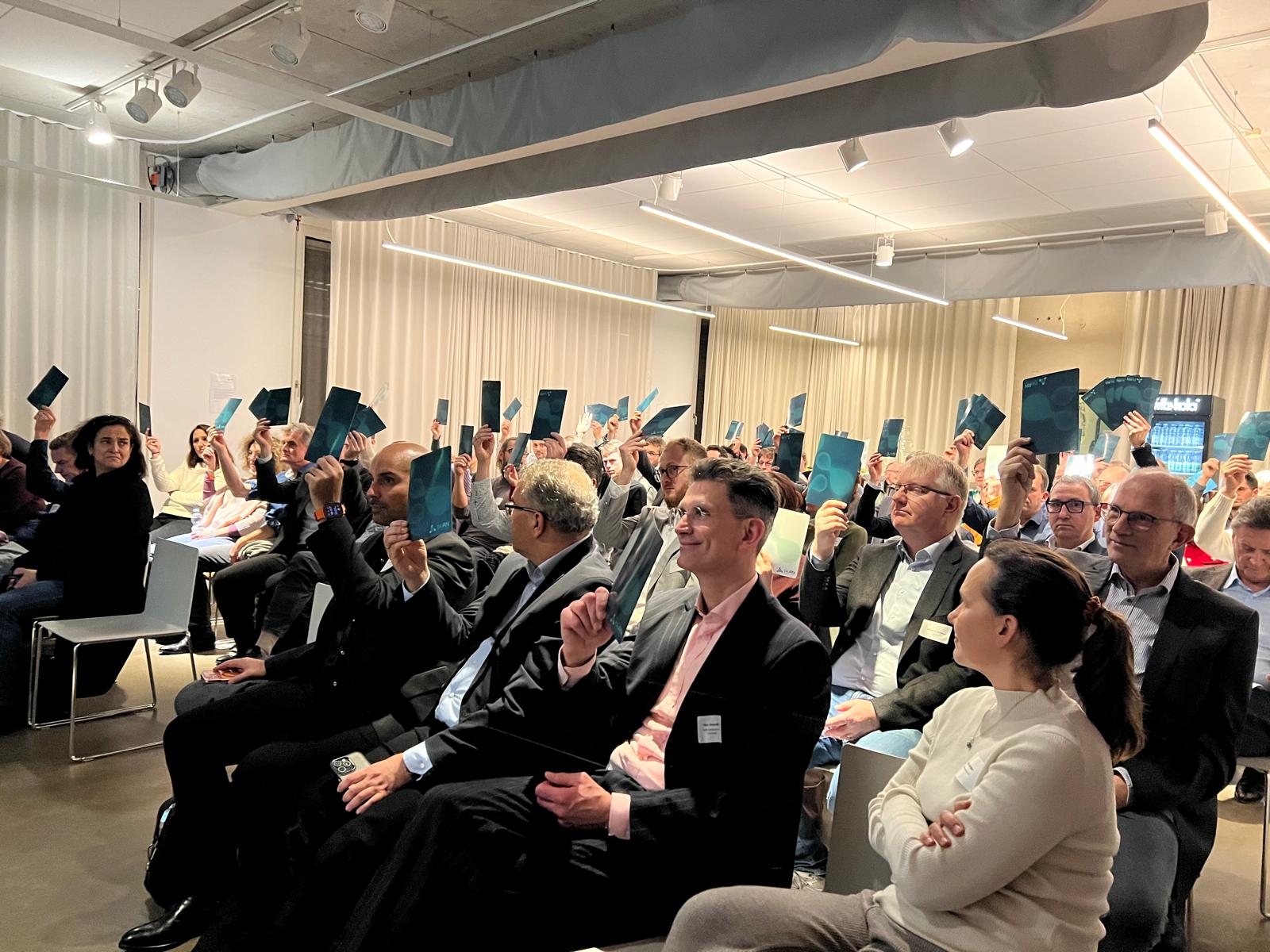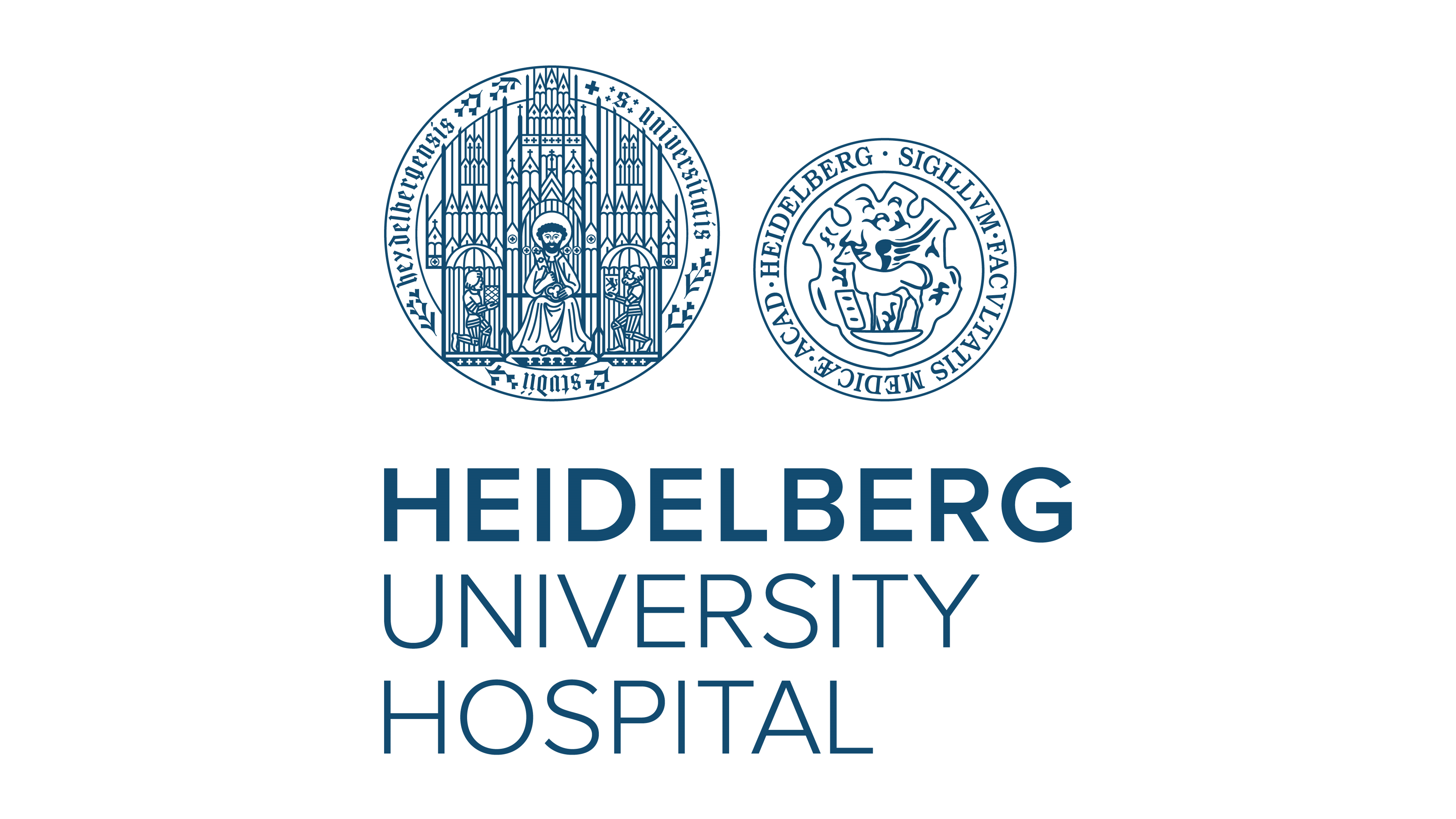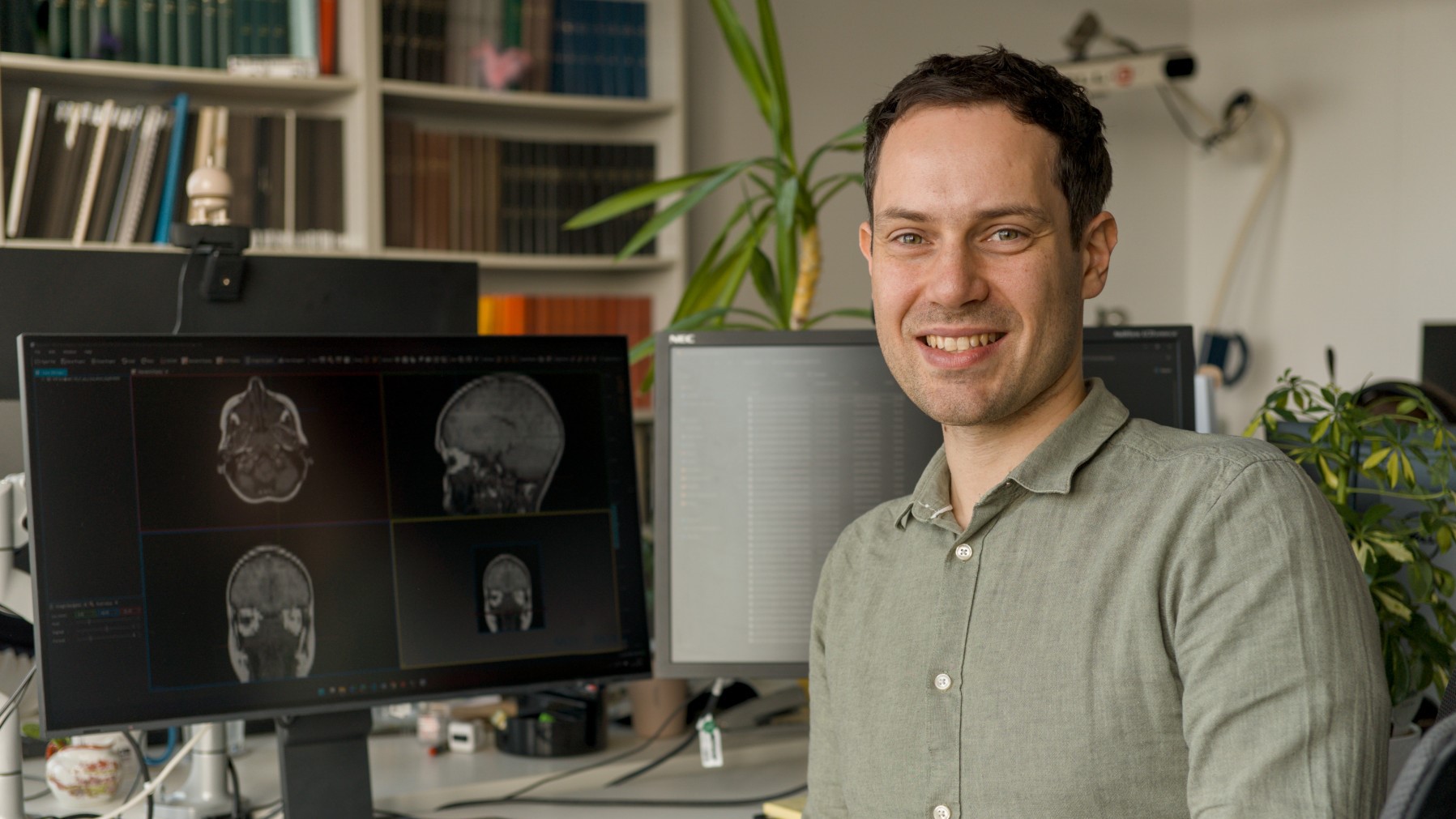Optical nanoscopy without the ON/OFF
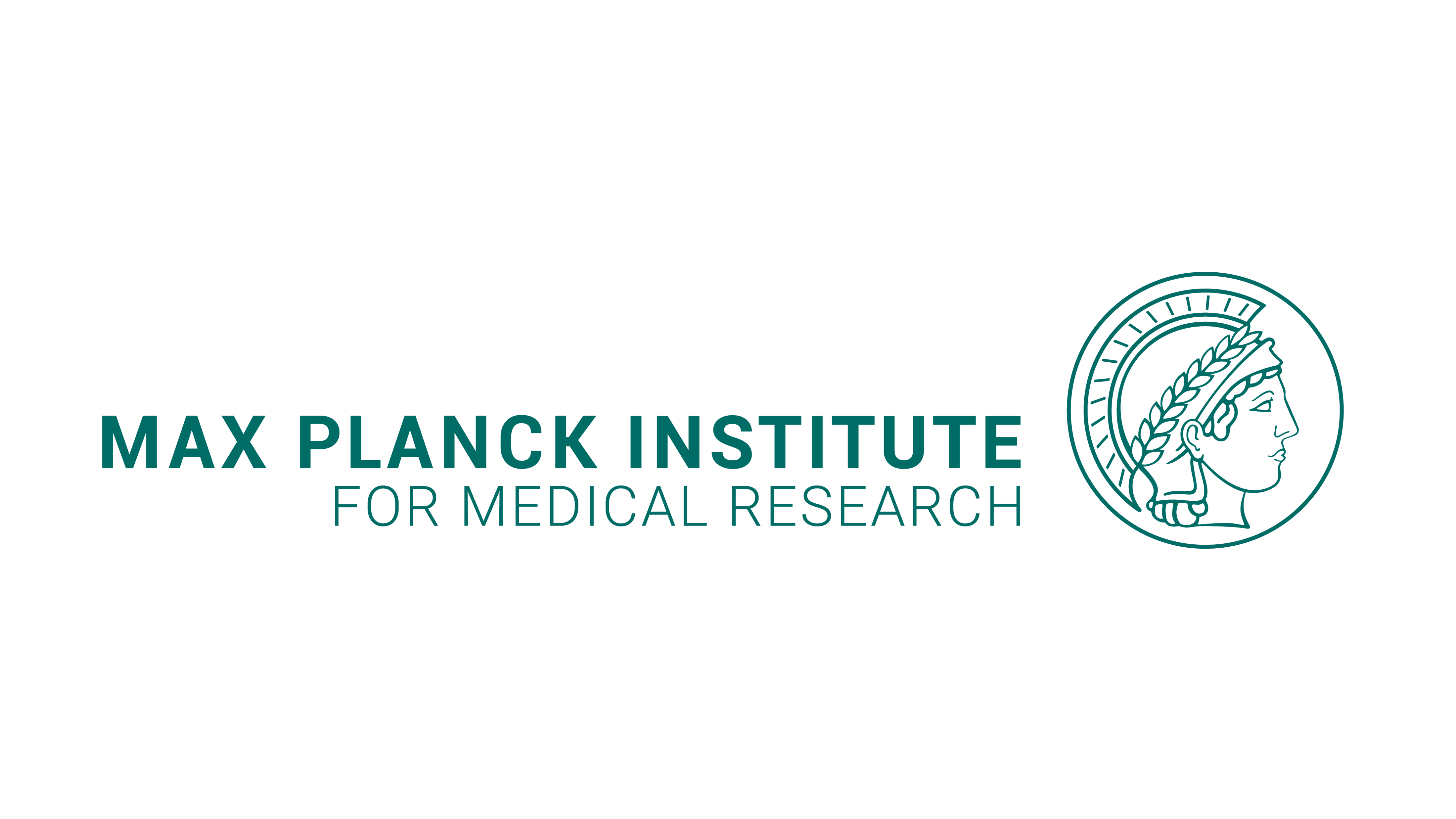
Researchers have increased the resolution in fluorescence microscopy by a factor of 30 without having to sequentially switch fluorescent molecules between light and dark states.
The Nobel Prize-winning STED and PALM/STORM microscopes, as well as other super-resolution fluorescence microscopes, provide resolutions of a fraction of the wavelength of light. However, to image adjacent fluorescent molecules separately, they must be sequentially switched between a fluorescent (ON) and a non-fluorescent (OFF) state. A team of scientists led by Stefan Hell has now increased the resolution by a factor of 30 – for the first time without molecular ON/OFF-switching. By using an illumination beam with a zero-intensity stripe (node) in the beam they were able to separate constantly emitting molecules down to distances of a few nanometers. The study implies the possibility to break the diffraction barrier also for other molecules – not just fluorophores. Moreover, this super-resolution concept can be extended to imaging with other types of waves. Furthermore, it could also allow ‘filming’ the tiny movements of individual proteins.
Overcoming the resolution limit in a light microscope of around half a wavelength of light (about 250 nanometers) is one of the most significant developments in optics. Due to the wave nature of light, even the best lens cannot produce a light spot smaller than 250 nanometers in diameter. All molecules within this bright spot are illuminated at the same time, light up together and, therefore, appear inseparable as a blurred whole. In the early 1990s, Stefan Hell realized that molecules could be separated by briefly switching the molecular signal ‘OFF’ and ‘ON’ in such a way that closely neighboring molecules are forced to signal consecutively. Molecules that signal consecutively can be readily distinguished.
In fluorescence microscopy, this ON/OFF separation principle could be implemented to perfection, since molecular fluorescence can be easily switched on and off. In fact, STED and PALM/STORM, as well as the more recent super-resolution fluorescence microscopes, are all based on this ON/OFF principle. Transferring nearby molecules briefly from a fluorescent ON to a non-fluorescent OFF state and vice-versa became the foundation of the burgeoning field of super-resolution fluorescence microscopy. In 2014, Stefan Hell and the US-American scientists Eric Betzig and William E. Moerner received the Nobel Prize in Chemistry for the development of super-resolution fluorescence microscopy.
Super-resolution without ON/OFF
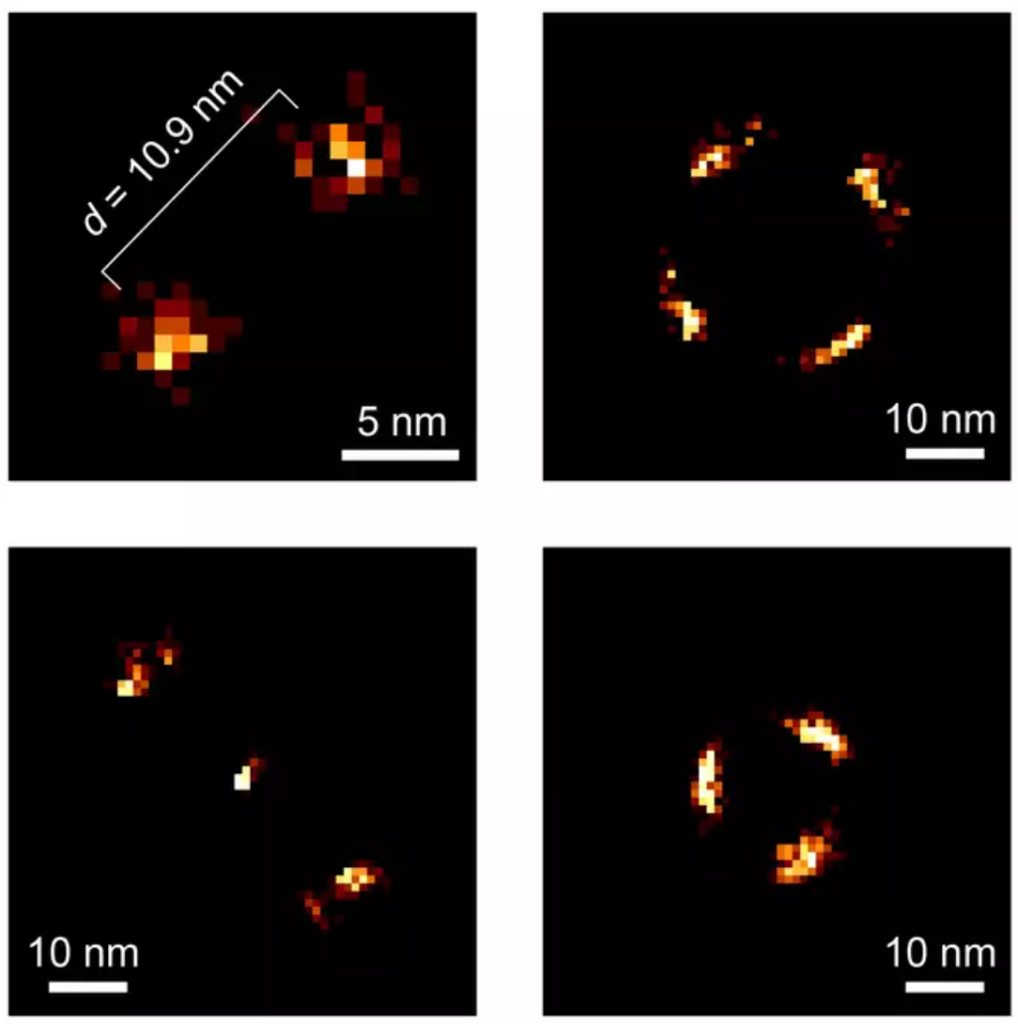
© Thomas A. Hensel / Max Planck Institute for Multidisciplinary Sciences
A team of scientists led by Hell from the Max Planck Institute (MPI) for Multidisciplinary Sciences in Göttingen and the MPI for Medical Research in Heidelberg has now shown that a countable number of molecules can be separated without ON/OFF switching. The researchers demonstrated experimentally that point objects such as molecules can be clearly separated down to small distances of 8 nanometers. To do this, they scanned the molecules with a beam of light that featured a zero-intensity line (node) in the center. As the beam scans across the sample, the measured signal is registered; in the case of fluorescent molecules, the signal is fluorescence. For a single fluorescent molecule, the signal is zero if, and only if, the zero-intensity node of the illumination beam matches the position of the molecule. However, if the sample contains two or more neighboring molecules, the measured signal cannot be zero. This is because, at any rate, at least one molecule cannot coincide with the zero-intensity point of the illumination light. Thus, the location of the molecules is encoded in the deviation of the measured signal from zero.
The scientists have demonstrated both theoretically and experimentally that this principle of ‘scanning with an intensity minimum’ can be used to determine the molecular positions very precisely. For example, they were able to separate two permanently emitting fluorophores at a distance of down to 8 nanometers. They also resolved a group of 3 or 4 molecules at distances of around 20 nanometers. “ON/OFF switching has been considered a necessary prerequisite for optical high resolution since introducing the STED principle for shutting off fluorescence over three decades ago. The concept of separating constantly emitting molecules just with a minimum is a breakthrough,” explains Hell.
Thomas Hensel, first author of the study and a PhD student in Hell’s team, notes: “With this new concept, it is in principle even easier to spatially register molecules that are closer together than those that are further apart. This is not obvious, because it turns the intuition about resolution upside down.” Previously, the closer the molecules were together, the harder it was to resolve them. If molecules are separated using bright light spots and signal maxima produced, as was the case in the past, it is difficult to distinguish between them, due to the signal-to-noise ratio of the respective molecules. “If you work with a dark spot or node and examine the deviation of the signal from zero, it is practically the other way around,” Hell adds.
Imaging with waves without a resolution limit
The Max Planck scientists believe that their results have great potential: “The idea of resolving with a minimum applies not only to fluorescent molecules, but generally to any molecules providing a signal with a good contrast. And it applies not only to optical waves, such as light, but in principle to any type of wave,” Hell says. “Resolving at the smallest distances without ON or OFF is important because it allows continuous observation of all molecules. There is no interruption by the necessity of turning the molecules OFF.”
Continuous observation opens up a further application: If a molecular machine, such as a protein or a protein complex, is labeled at different points with constantly signaling molecules, one should be able to track their fine changes in position, making it possible to ‘film’ the actual working of these nano-sized machines of life. In the future, this could help to design drugs that, as needed, either prevent or support specific proteins to carry out their function. By providing insights into how proteins work mechanistically, this microscopy method may eventually even speed up drug discovery.
Original publication
Hensel, T. A.; Wirth, J. O.; Schwarz O. L.; & Hell, S. W.
Diffraction minima resolve point scatterers at few hundredths of the wavelength
Nature Physics, February 21, 2025
Source
DOI


